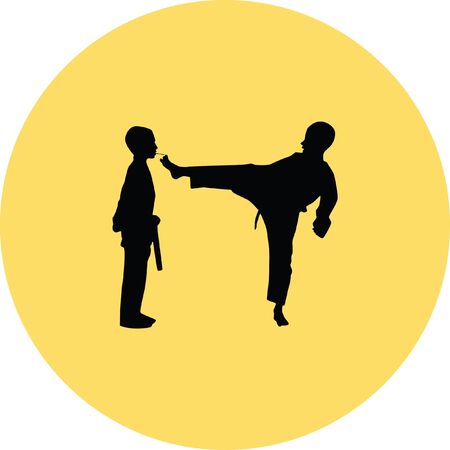Understanding Cultural Diversity in American Communities
The United States is a vibrant blend of cultures, languages, and traditions. As one of the most culturally diverse countries in the world, America’s population includes people from nearly every continent and background. This diversity shapes how individuals approach health, wellness, and physical activity, making cultural awareness essential for any therapeutic exercise program.
The Multicultural Landscape of the U.S.
American communities are shaped by an array of cultural influences. Demographic trends show that the nation’s population continues to grow more diverse each year. According to recent census data, nearly 40% of Americans identify with a racial or ethnic group other than non-Hispanic White. This diversity is further enriched by immigration patterns, religious beliefs, languages spoken at home, and varying socioeconomic backgrounds.
Major Cultural Groups and Their Presence
| Cultural Group | Approximate Population (%) | Common Languages |
|---|---|---|
| Hispanic/Latino | 19% | Spanish, English |
| African American/Black | 13% | English |
| Asian American | 7% | Chinese, Tagalog, Vietnamese, Korean, English |
| Native American & Alaska Native | 1.5% | Tribal Languages, English |
| White (Non-Hispanic) | 59% | English, Other European Languages |
The Importance of Cultural Awareness in Therapeutic Exercise
Cultural perspectives can influence attitudes toward movement, body image, pain tolerance, family involvement in care, and even trust in healthcare providers. For example:
- Some cultures may prefer group activities involving family or community members.
- Certain faiths or traditions might impact dress codes or types of acceptable exercise.
- Language differences can create barriers to understanding instructions or expressing discomfort.
Key Benefits of Culturally Responsive Programming
- Improved communication between therapists and clients
- Increased participation and motivation during sessions
- Enhanced trust and therapeutic alliance
Acknowledging these factors helps ensure that therapeutic exercise programs are respectful, accessible, and effective for everyone—no matter their background or beliefs.
2. Principles of Culturally Responsive Care
Culturally responsive care is essential in creating therapeutic exercise programs that truly support the diverse communities across the United States. This approach goes beyond simply acknowledging cultural differences—it’s about actively respecting, valuing, and integrating these differences into every step of program design and delivery.
Understanding Foundational Concepts
To deliver effective and inclusive therapeutic exercise programming, rehabilitation professionals should focus on three key principles: cultural humility, cultural sensitivity, and cultural competence. Each plays a unique role in ensuring clients feel respected, understood, and empowered.
Cultural Humility
Cultural humility means recognizing that you don’t have all the answers about someone else’s background or experiences. It’s about being open to learning from your clients and being willing to adapt your approach based on their needs and preferences. For example, asking questions like “What physical activities are important in your family or community?” shows respect and a willingness to learn.
Cultural Sensitivity
Cultural sensitivity involves being aware of how culture shapes a person’s beliefs, values, and behaviors—especially related to health, movement, and exercise. This helps avoid assumptions or stereotypes. For example, understanding that some clients may prefer group activities due to communal cultural values, while others may prioritize privacy or modesty during exercise.
Cultural Competence
Cultural competence is the ability to work effectively with people from different backgrounds by applying knowledge of their cultures into clinical practice. This includes modifying exercises, communication styles, or settings based on what is culturally appropriate and meaningful for each client.
Applying Principles in Practice
The table below provides practical examples of how these principles can be applied in therapeutic exercise programming:
| Principle | What It Looks Like in Practice |
|---|---|
| Cultural Humility | Listening to clients describe their comfort with certain movements or group settings; adjusting programs based on client feedback. |
| Cultural Sensitivity | Being mindful of religious practices (such as prayer times or fasting) when scheduling sessions; offering options for clothing or privacy. |
| Cultural Competence | Providing exercise instructions in a client’s preferred language; incorporating traditional forms of movement such as dance or martial arts relevant to the client’s culture. |
Why These Principles Matter
By weaving these foundational concepts into therapeutic exercise programming, practitioners build trust with clients from all backgrounds. This not only helps improve participation and outcomes but also ensures that every individual feels valued and understood within the American healthcare system.
![]()
3. Adapting Exercise Programming for Diverse Needs
Understanding the Diversity in American Communities
The United States is home to people from many backgrounds, each with unique beliefs, traditions, and experiences. When creating therapeutic exercise programs, it’s important to understand that what works for one group may not work for another. Culturally responsive programming means listening to community members, respecting their values, and adapting exercises so everyone feels included and supported.
Strategies for Culturally Responsive Exercise Modification
Respecting Beliefs and Traditions
Some communities have specific guidelines or customs about dress, physical contact, or even types of movement. For example, in some cultures, mixed-gender exercise groups may be uncomfortable. Therapists can offer single-gender sessions or adjust attire recommendations to make participants feel at ease.
Accommodating Functional Levels
Every person has different abilities. Some may be older adults with limited mobility; others might be children or individuals with disabilities. The table below gives examples of how exercises can be modified:
| Population | Common Needs | Exercise Modifications |
|---|---|---|
| Seniors | Balance, joint protection | Chair exercises, slow-paced routines |
| People with Disabilities | Mobility aids, varying strength levels | Seated options, adaptive equipment use |
| Youth/Children | Short attention span, need for fun | Games-based movement, shorter sessions |
| Culturally Observant Groups | Modesty in attire, gender separation | Private sessions, clothing flexibility |
Enhancing Accessibility for All Participants
Accessibility goes beyond physical modifications—it includes language support, transportation help, and flexible scheduling. Offering instructions in multiple languages or providing visual guides can help more people participate fully. Collaborating with local community centers or faith organizations can also improve access to safe and familiar spaces.
Tips for Inclusive Communication:
- Use clear, simple language free from jargon.
- Check in regularly to ensure everyone understands the instructions.
- Create feedback opportunities so participants can share what works for them.
Building Trust Through Community Engagement
Culturally responsive therapists often partner with local leaders and organizations to gain trust and insight. By attending community events and listening to feedback, they learn which activities are meaningful and which should be avoided. This helps shape exercise programs that feel welcoming and relevant to all involved.
4. Effective Communication and Community Engagement
Building Trust with Diverse American Communities
Establishing trust is the foundation for effective therapeutic exercise programming, especially in diverse communities across the United States. Health professionals should show respect for cultural values, beliefs, and traditions. Taking time to listen actively, using eye contact appropriately, and being transparent about treatment goals can help build strong relationships. Engaging community leaders or trusted figures can further strengthen trust and encourage participation.
Utilizing Culturally Meaningful Language and Concepts
Clear communication means more than just speaking the same language—it also involves understanding culturally significant words, phrases, and concepts. For example, some communities may respond better to terms like “wellness,” “family strength,” or “community support” rather than strictly medical language. It’s important to ask individuals how they prefer to discuss health and exercise topics. When needed, provide materials in multiple languages or use interpreters who understand both language and culture.
| Cultural Group | Preferred Communication Styles | Culturally Relevant Terms |
|---|---|---|
| Latino/Hispanic Americans | Warm greetings, family involvement | Bienestar (well-being), Familia (family) |
| African Americans | Personal stories, community connection | Strength, Heritage, Unity |
| Asian Americans | Respectful tone, privacy valued | Harmony, Balance, Respect |
| Native Americans | Elders’ input valued, storytelling | Tradition, Healing circle, Community wellness |
Engaging Families and Communities for Better Outcomes
Therapeutic exercise programs are more successful when families and community members are included. Involving family in care planning can increase motivation and accountability. Hosting group classes at local churches, community centers, or schools makes activities more accessible and familiar. Partnering with community organizations also allows for sharing resources and reaching a wider audience.
Key Strategies for Family and Community Engagement
- Hold workshops: Offer educational sessions where families can learn together.
- Create support groups: Encourage participants to share experiences and progress with peers.
- Celebrate milestones: Recognize achievements publicly within the community.
- Cultural events: Incorporate traditional music, dance, or food into exercise sessions.
- Feedback loops: Ask for regular input from participants to adapt programming as needed.
The Impact of Community Engagement on Program Success
When people feel seen and heard within their cultural context, they are more likely to stick with therapeutic exercise routines. Effective communication paired with active community involvement builds lasting partnerships that lead to better health outcomes for everyone involved.
5. Case Studies and Practical Applications
Real-World Scenarios in Culturally Responsive Therapeutic Exercise
Culturally responsive therapeutic exercise programming is essential for engaging individuals from diverse backgrounds across the United States. By considering cultural values, language preferences, and community practices, therapists can design programs that are both effective and respectful. Here are some real-world case studies and practical examples that highlight best practices.
Case Study 1: Latino Community Senior Fitness Program
A physical therapy clinic in Southern California noticed low participation rates among Latino seniors in their standard group exercise classes. After consulting with local community leaders and family members, the clinic adapted their programming as follows:
| Challenge | Action Taken | Lesson Learned |
|---|---|---|
| Low attendance due to language barriers and unfamiliar exercises | Classes offered in Spanish; exercises incorporated traditional Latin dance steps (e.g., salsa, merengue) | Program engagement increased when language and familiar movement patterns were used |
| Lack of family involvement | Family members invited to join sessions; social time added before class | Family inclusion motivated elders and created a supportive environment |
Case Study 2: Native American Youth Movement Initiative
On a reservation in the Midwest, therapists worked with tribal leaders to address high rates of inactivity among teens. Rather than using mainstream fitness routines, they integrated culturally meaningful activities:
- Traditional Games: Incorporating stickball and powwow dancing into exercise sessions connected youth with their heritage while promoting physical activity.
- Elders as Mentors: Local elders shared stories about traditional movement, fostering respect and engagement.
- Results: Attendance improved, and youth reported feeling more connected to their culture.
Case Study 3: Urban Asian American Women’s Wellness Group
An urban rehabilitation center in New York designed a women’s wellness program tailored for Asian American clients, many of whom felt uncomfortable with mixed-gender exercise spaces or certain body postures:
- Cultural Preferences: Female-only classes respected cultural norms regarding modesty.
- Movement Modifications: Yoga and Tai Chi were included as these were familiar forms of movement for many participants.
- Nutritional Discussions: Sessions included culturally relevant nutrition tips alongside exercise education.
- Outcome: Participants expressed greater comfort and consistency in attending classes.
Key Takeaways Across Settings
| Cultural Group/Setting | Culturally Responsive Strategy | Main Benefit Observed |
|---|---|---|
| Latino Seniors (CA) | Bilingual instruction; dance-based movements; family inclusion | Higher participation and enthusiasm |
| Native American Youth (Midwest) | Traditional games; elder mentorship; cultural storytelling | Youth engagement and cultural pride increased |
| Asian American Women (NYC) | Women-only groups; familiar movement styles; nutrition integration | Sustained attendance and improved comfort levels |
Practical Tips for Therapists Nationwide
- Ask about cultural preferences during intake assessments.
- Create partnerships with local community leaders or organizations for program planning.
- Select exercises and teaching methods that honor client traditions and languages whenever possible.
- Be open to modifying group structures (e.g., single-gender classes) based on participant feedback.
- Regularly seek feedback from participants to make ongoing improvements.
Culturally responsive approaches not only improve health outcomes but also build trust between therapists and diverse communities. These real-world examples demonstrate how thoughtful adaptation leads to better engagement, satisfaction, and long-term wellness across Americas many cultural landscapes.


